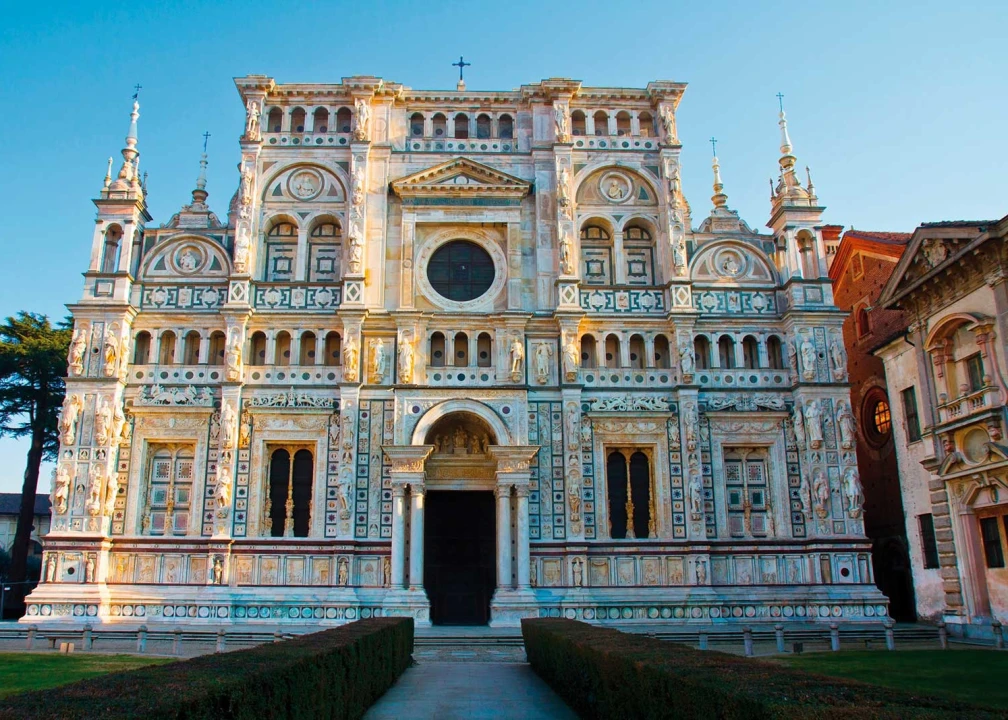Pavia is set in the heart of the Po Valley in Lombardy and although it is now a modern town its origins go back to Roman times. The city stretches along the right bank of the Ticino River and is dominated by medieval towers which testify to the artistic and architectural treasures waiting to be discovered here.
Ancient History
Ticinum was founded by Ligurians and Celts and became the trade hub between the plains and the major rivers thanks also to the two Roman consular roads which crossed here; spices and fabrics imported by Venetian merchants in the Middle Ages arrived on boats along the Po and Ticino Rivers on their way to Milan. This capital of the Lombard kingdom was sacked several times by barbarians, conquered by Carolingians and dominated during the eighteenth and nineteenth centuries by the Spanish, French and Austrians becoming finally part of the Kingdom of Sardinia, the future Kingdom of Italy, in 1859.
What to see
The monuments, the cobbled streets and house facades in a warm terracotta colour in the heart of Pavia’s historical centre give us glimpses of a glorious past as does the cathedral dedicated to Santo Stefano Martire (St. Stephen the Martyr) and Santa Maria Assunta (St. Mary of the Assumption). This important Renaissance building with a Greek cross plant and an octagonal dome holds the remains of San Siro. Other religious buildings include the Cathedral of San Pietro in Ciel d'Oro (St. Peter in the Golden Sky), founded by Lombards and rebuilt after the year 1000; the basilica of San Teodoro, the church of Santa Maria del Carmine, a fine example of Gothic Lombard architecture, and the Romanesque Basilica of San Michele Maggiore, in sandstone. The first stops among the historic buildings must be to the Visconti Castle which houses the prestigious Civic Museums and to the Ponte Coperto (Covered Bridge) that connects the historical centre with the district of Borgo Ticino, a quaint fishing village. The Malaspina, Bottigella, Orlandi and Mezzabarba palaces are well worth a visit as are also the eighteenth-century theatre Fraschini, the Botanical Gardens, with their beautiful greenhouses, and the area of the "Broletto" overlooking Piazza della Vittoria, surrounded by fourteenth century porticos. The town of Certosa of Pavia is not far away and here its magnificent and beautiful monastery can be admired.
What to do
Pavia is a vibrant and multi-faceted town with a great love of art and culture. Every year, the town hosts art exhibitions, film festivals and conferences devoted to the history of art. A passion for theatre is also very much alive, although fun opportunities these days can also be found in clubs, live music venues and pubs, the places preferred by young people and university students.
Trivia
Pavia and its surroundings are transit areas of the ancient Via Francigena, still a tourist destination. Not everyone knows that Pavia is one of the oldest universities in Lombardy, founded in 825 when Lothair I established a school of rhetoric. During the eleventh century the city became home to a law school and in 1361 Emperor Charles IV transformed it into a “Studium Generale”. These days the city has 15 mainly ancient colleges which include the Borromeo, the Ghislieri and the College of Saint Catherine of Siena.




